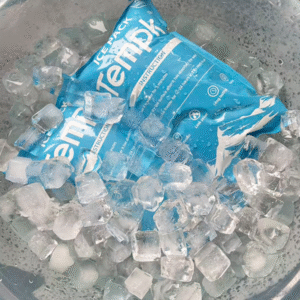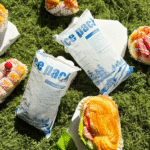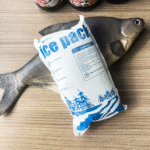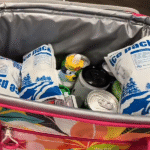Paquet de 12 Packs de glace sec: 2025 Shipping Playbook
If you need reliable frozen or chilled control, un paquet de 12 packs de glace sec lets you scale hold time from day trips to multi‑day lanes without guesswork. Dans ce guide, vous dimensionnerez correctement le pack, éviter les dégâts dus au gel, et rencontrer 2025 règles d'étiquetage et de sécurité. Vous verrez également quand choisir le gel/PCM plutôt que la vraie neige carbonique, ainsi qu'une liste de contrôle rapide pour réduire la détérioration de moitié sur les routes chaudes.
Note éditoriale: Cette page consolide et améliore les trois versions préliminaires que vous avez fournies en un seul article prêt pour 2025..
-
Choisissez le bon paquet de 12 packs de glace sec for frozen vs. voies réfrigérées
-
Calculate how many packs you need for 24-72h itinéraires
-
Paquet, étiquette, and vent safely with compliance-ready steps
-
Compare gel/PCM packs versus vraie glace sèche for cost and risk
-
Use a quick self-check tool to cut exceptions and refunds
Comment fonctionne un paquet de 12 les packs de glace carbonique améliorent le temps de maintien?
Réponse courte: Un paquet de 12 dry ice packs spreads cold evenly, prolonge le temps de maintien, and fits different box sizes with modular placement. Twelve smaller units surround the payload, reduce hot spots, and keep temperatures stable when doors open or drivers dwell. In typical insulated shippers, a 12‑pack can maintain sub‑zero or chilled ranges for 24–72 heures, depending on insulation thickness, chaleur ambiante, et remplissage vide.
Pourquoi cela fonctionne pour vous:
Placing more packs en haut counters warm air ingress each time a box is opened. Lining sides and filling voids slows convection. On summer lanes, switching from one large block to a 12‑pack layout often yields longer, flatter temperature curves and fewer excursions. For chilled SKUs (0–8 ° C), select PCM packs; for deep‑frozen (≤ –18 °C), use true dry ice or a hybrid (dry ice plus PCM partitioning) to protect mixed payloads.
What’s the fastest way to size a 12‑pack for your route?
Practical method: estimate heat gain and match it with total cold capacity, puis ajoutez un 20–30% de tampon. Use the table below for quick picks before full validation.
| Sizing shortcut (but) | Base de base | Tampon | Ce que cela signifie pour vous |
|---|---|---|---|
| Chilled 0–8 °C, 24–36h | 8–10 PCM packs | +2 en haut | Safer for door‑step holds and hot docks |
| Frozen ≤ –18 °C, 24–48h | 6–10 lb de neige carbonique | +25% | Mark un1845, secouer, add top‑load packs |
| Mixed SKUs 36–60 h | 6–8 PCM + 4–6 lb dry ice | +2 PCM top | Gelé reste gelé; chilled won’t freeze |
Actionable tips for users
-
Court, routes chaudes: Utiliser more top‑packs; heat rises when the carton is opened.
-
Longues voies: Mettre à niveau vers VIP or reflective liners; you’ll cut required refrigerant by ~20–30%.
-
Tight budget: Right‑size cartons to kill air gaps; fewer cubic inches = less heat load.
Cas réel: A meal‑kit brand shifted to a 12‑pack PCM “top‑heavy” pattern and added a foil liner. Summer refunds fell 28% while packout cost stayed flat.
Paquet de 12 Packs de glace sec
Paquet de 12 dry ice packs vs. real dry ice—what should you choose?
Fin de compte: Use the pack of 12 packs de glace sec (PCM / GEL) for chilled goods that must not freeze; use real dry ice for frozen and deep‑frozen goods. PCM maintains a steady 0–8 °C band without damaging sensitive SKUs. Vraie glace sèche (co₂ solide, ~–78.5 °C) delivers the coldest temps and longest frozen hold but nécessite un étiquetage, EPP, et ventilation.
How to decide quickly:
-
Chilled meds, produire, chocolat: un 12‑pack PCM kit prevents freeze shock.
-
Glace, viande surgelée, biologique: glace carbonique keeps ≤ –18 °C stable for multi‑day lanes.
-
Charges mixtes: dry ice above frozen SKUs; PCM around chilled SKUs with a cardboard partition.
Hybrid packout that reduces risk
Start with pre‑conditioned PCM around the sides, charge utile centrée, glace sèche sur le dessus of a divider for frozen items only. If the dry ice finishes early, PCM maintains safe refrigeration until delivery. This reduces excursions without adding meltwater or messy clean‑ups.
| Choix | Core advantage | Trade‑off | Meilleur ajustement |
|---|---|---|---|
| 12‑pack PCM/gel | Simple, pas de danger | Maintien gelé plus court | Chilled 0–8 °C; “no‑freeze” SKUs |
| Glace sèche | Deep‑frozen endurance | Étiquetage, EPP, ventilation | Frozen ≤ –18 °C, 48–72h |
| Hybride | Stabilizes both bands | Slight packout complexity | Skus mixtes, vivre le week-end |
How to size a pack of 12 dry ice packs for 24–72 hours?
Core rule: Match heat load with total refrigerant capacity and add 20–30% headroom. Pour PCM, use the pack’s latent heat spec; pour la glace sèche, field rules of thumb are ~ 5 à 10 lb par 24h in small coolers, heavily dependent on insulation and voids.
Step‑by‑step from your desk:
-
Définir la voie: total hours door‑to‑door, worst‑case ambient, any weekend holds.
-
Know your box: insulation thickness or R/U‑value (EPS VS. VIP vs. doublure réfléchissante).
-
Estimate heat load: U × Area × ΔT × time.
-
Pick PCM or dry ice mass: capacity ≥ heat load × 1.25 (tampon).
-
Placement: 60% of cold mass en haut, balance on sides; remplir les vides.
Mini‑calculator (exemple, paste into your notes):
2025 conformité & safety checklist (if you use real dry ice)
Non‑negotiables you can copy into your SOP:
-
Marquage: "Et 1845, Glace sèche, net __ kg» + Classe 9 étiquette; keep addresses off the hazard diamond.
-
Ventilation: Ne jamais sceller hermétique; CO₂ must vent to prevent pressure build‑up.
-
EPP: gants isolés et protection oculaire; avoid prolonged handling.
-
Placement: glace carbonique au-dessus de la charge utile; cold sinks as it warms.
-
Documentation: follow the current air‑carrier acceptance checklist for dry‑ice‑as‑refrigerant.
-
Entrepôt & vehicle safety: monitor air in small spaces; follow occupational exposure limits.
For PCM/gel 12‑packs: no UN1845 marks needed; still include clear “Do Not Freeze" ou "Réfrigéré 2–8°C” instructions for recipients to minimize door‑open time.
2025 cold chain trends and what’s next
Aperçu de la tendance:
Dans 2025, modular packouts dominate: brands standardize one paquet de 12 packs de glace sec for chilled lanes and add dry ice only when frozen endurance is essential. Bio‑CO₂ sourcing and CO₂ recovery improve sustainability claims. Low‑cost reflective liners and thin VIP panels shave 20–30% off refrigerant needs, while compact data loggers make validation routine for SMBs.
Derniers développements en un coup d'œil
-
Refroidissement hybride (glace carbonique + PCM): smoother curves, fewer excursions on mixed loads.
-
Reflective “foil” liners: easy retrofit to extend runtime without re‑boxing.
-
Top‑heavy layouts: more cold mass on top to counter door‑open heat spikes.
Perspicacité du marché:
E‑grocery, biologique, and direct‑to‑patient shipments keep driving demand. Teams that validate two or three standard kits (24 H, 48 H, 72 H) report lower exception rates and simpler training—especially for seasonal staff.
FAQ
Combien de temps durera un paquet de 12 dry ice packs keep my goods cold?
With EPS or reflective liners, attendre 12–48h for PCM chilled packs; with dry ice and good insulation, 24–72h pour les voies surgelées. Validate for your route and add a 20–30% buffer.
Can I fly with a 12‑pack if it’s gel/PCM, pas de glace carbonique?
Oui. PCM/gel packs are not UN1845. Si vous ajoutez de la glace sèche, apply UN1845 marks, correct net weight, Et une classe 9 étiquette.
How many packs do I actually need?
Start with the heat‑load method. As a shortcut, utiliser 8–10 PCM packs for 24–36 h chilled at 25 °C ambient; for frozen, 6–10 lb dry ice per 24–48 h and adjust for insulation.
Will dry ice damage food?
Ça peut. Keep food wrapped and separate with cardboard; never allow direct contact.
Can I reuse PCM packs?
Oui. Re‑freeze flat, avoid stacking while charging, and replace any punctured cells.
Résumé & recommandations
Points clés: UN paquet de 12 packs de glace sec gives you modular cold placement, flatter temperature curves, and easier scaling across box sizes. Use PCM for chilled 0–8 °C, glace sèche pour produits surgelés, and hybrids for mixed loads. Cartons de bonne taille, remplir les vides, and keep more cold mass on top to extend runtime.
Étapes suivantes (CTA):
-
Pick your target band (réfrigéré vs. congelé).
-
Choose PCM or dry ice (ou hybride) and size with a 25% tampon.
-
Validate one 24 H, un 48 H, and one 72 H kit with loggers.
Parler à tempk for a packout worksheet and a lane‑by‑lane validation plan.
À propos du tempk
We design cold‑chain solutions that are easy to run at scale. Our validated 12‑pack PCM kits, doublures réfléchissantes, and frozen packouts help you hold spec with less refrigerant and fewer exceptions. We back it with training SOPs and quick calculators so your team spends less time firefighting and more time shipping.
Ready to optimize your packouts? Contact us for a fast assessment and a route‑ready configuration.
























